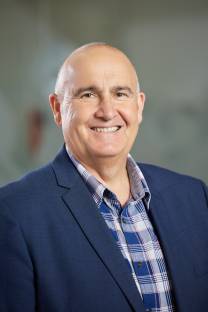What I’m reading – Stefan Speller
Director Stefan Speller shares why Patrick Lencioni’s leadership fable remains a go-to read for navigating dysfunction at the board table.

Nigel Smith MInstD qualified as an architectural designer and quantity surveyor “back in the day when it was all hand drawing with a T-square and set-square”.
But as times have changed, so has he. On a path that has led through building, project management, trusteeship and culminated in chairing some of the most influential boards in New Zealand’s construction sector – the Residential Master Builders Association (RMBA) and the Building Research Association of New Zealand (BRANZ).
Somewhere along the way he realised that he really enjoyed working on strategy and that governance was integral to business success.
“I won’t say governance is the more important side of business,” Smith says, “but if you haven’t got that part right then things don’t tend to work smoothly.”

Smith’s busy governance life currently includes sitting on a number of boards, and he is also a director of national residential construction company, Milestone Homes.
Having a strong personal commitment to ongoing learning, he recently made the time to undertake the Institute of Directors’ Advanced Directors Course (ADC), which he says helped give him more confidence in his roles as a board chair.
Smith says the level of governance expertise was high on the course and attendees “all went to work straight away”.
“It was like I had walked into a boardroom,” he says. “We got through a power of work and training. Everybody was there to do business.”
With Chatham House rules in place, Smith found ADC participants were prepared to be very forthright about the challenges their boards had faced, and overcome.
“Obviously there was a ‘cone of silence’ and there were exceptionally good examples of stamina and bravery.”
One of the challenges Smith is keen to face head on is ensuring that directors have adequate mental health support in their board roles. And that has to come from their fellow directors as well as external support organisations, he says.
He identifies a potential gap in this area that boards need to fill themselves, on behalf of their fellow directors.
“How do you assist fellow directors and, board chairs? It is the board culture flowing in multiple directions – from the chair to the board and from the board back to chair. We need to think about supporting each other during tough decision making environments.”
Part of that can be carving out time in a busy schedule to talk about day-to-day life.
“Making time to chat with other directors about their family, or interests so that they are ‘humanised’ is an area that is really important.”
Another challenge that is on Smith’s mind is the place of the Treaty of Waitangi in governance – does it have a place? he asks.
It arose as a question for him during an ADC presentation by IoD council member Dr Jim Mather CFInstD. This presentation made him realise that the answer doesn’t necessarily have to lie in having Māori representation on a board, it can be as simple as finding out what a different thought process could bring to the conversation.
“One of the practical topics Jim looked at was longevity of strategic planning. Boards might have a 10-year plan. Some might push that out to a 20-year plan. Applying a te ao Māori viewpoint, you might think in terms of an 800-year plan.
The shorter strategic timeframes – Smith mentions 10 years – can be visualized and strategic discussions can turn “tactical”, he says. Looking at a longer timeframe frees directors up to speculate and explore new ideas.
“It just blows their minds when you ask to a board, where will we be in 50 years time? What will we look like in 50 years time? You get some really interesting answers. People start to go way out on parallels. What will the environment be? Will we have come full circle? Will AI have made us redundant?”
So long as you are confident in your organisational purpose, your ultimate destination, there is value in allowing boards up to consider “zig-zagging” along the way, he says.
One of the boards he served on at the time was struggling with understanding if te ao Māori fitted into its work and, if it did, how it fitted.
“We didn’t have to take a te ao Māori journey if we didn’t choose to, but we found there was a fit and a purpose for a different strategic approach and discussion. Jim’s presentation was a real standout and has contributed to a different dynamic in the board room.”